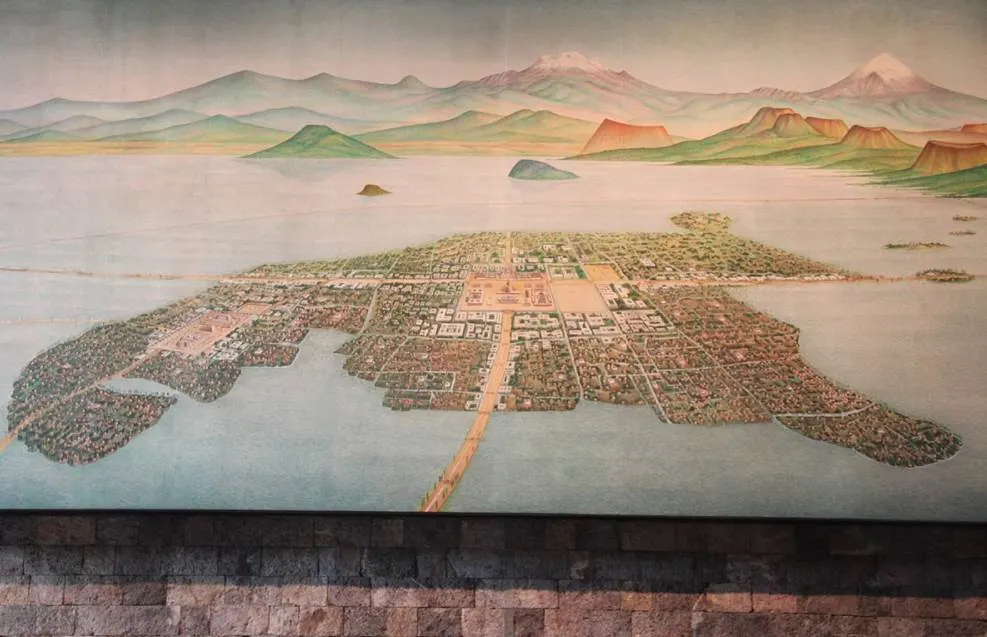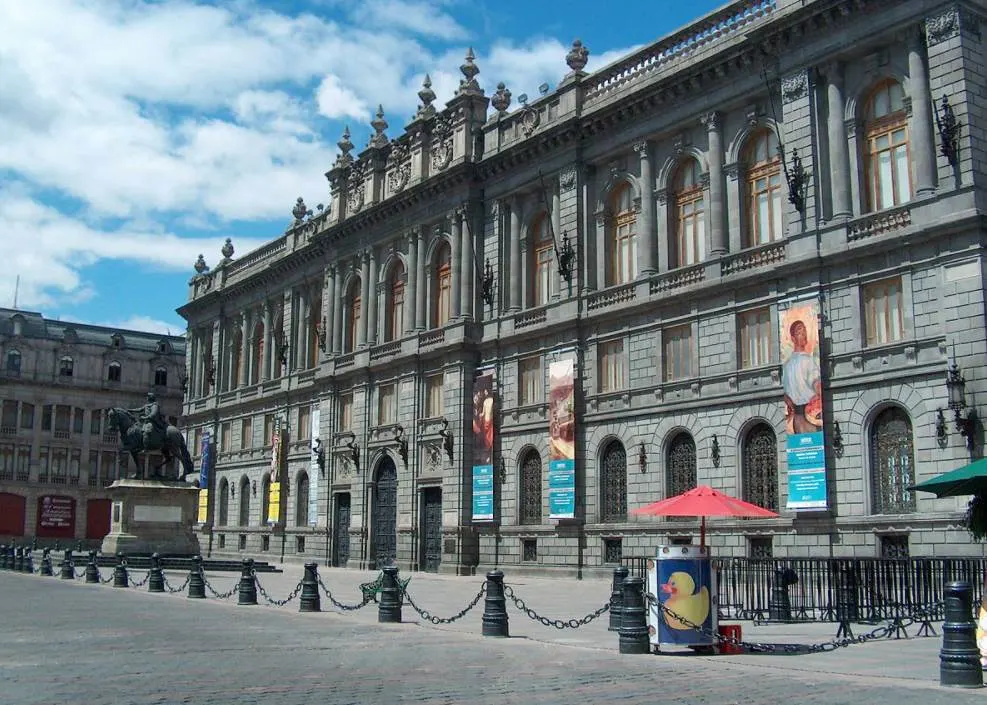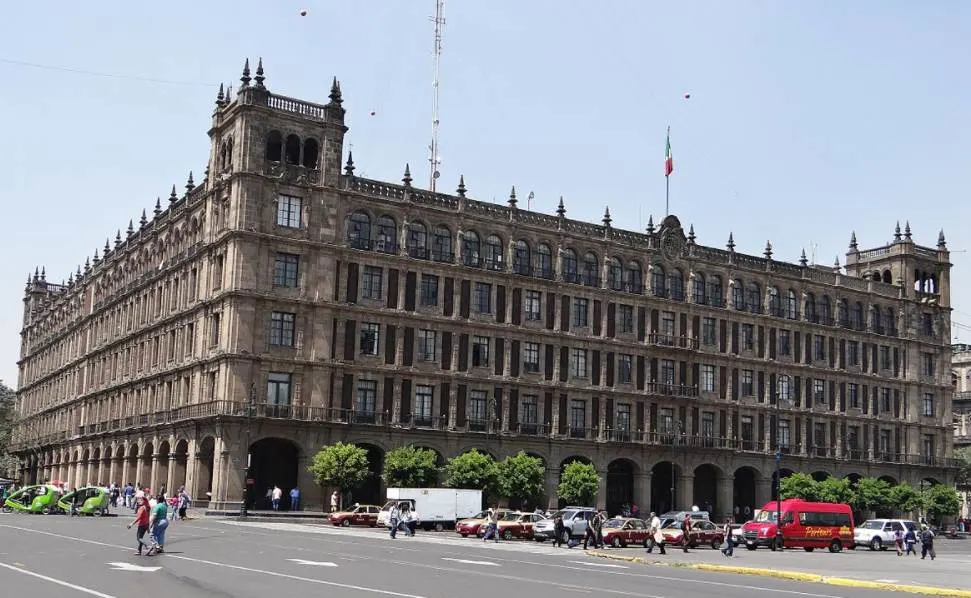One of the greatest public spaces in the world has been the main gathering place for people living in modern-day Mexico long before the Spanish conquest of the 16th century.
In this article, we’ll take a closer look at some of the most interesting facts about the Zócalo in Mexico City, a square with a remarkable history that is lined with some of the most impressive buildings in the country.
1. It’s considered to be the historic heart of Mexico City
The Zócalo is considered to be the historic heart of Mexico City, the capital of Mexico, and has been since the 16th century. The square was established by the Spanish following their conquest of Tenochtitlan in 1521, the capital of the Aztec Empire.
They instantly established the square following this event that ended the Aztec Empire. It was constructed between 1521 and 1523 and officially opened to the public in 1524.
The square is located right in the heart of this enormous city that has over 9.2 million inhabitants in its city proper alone and nearly 22 million in its metropolitan area. This means that the city was built around this important square over the century.

2. It was the central square in the Aztec Capital as well
It’s unclear when the capital of the Aztec Empire was founded but it’s assumed that Tenochtitlan was established in the year 1325. This remarkable city was built on an island that was situated in Lake Texcoco in the Valley of Mexico.
This former natural lake is now completely developed as Mexico City grew exponentially over the centuries. Tenochtitlan was at one point the largest city in the pre-Columbian Americas.
This hectic market city had an estimated population of anywhere between 20,000 and 40,000 inhabitants. One of the most remarkable facts about the Zócalo is that this open space was also the central space of the Aztec Capital ever since the 14th century.

3. Its official name refers to the first Constitution of Spain
The official name of the Zócalo is the “Plaza de la Constitución.” The first Mexican Constitution was created in the year 1824 and it was followed by several others. The current constitution officially came into effect after being signed in the year 1917.

Remarkably, the official name of the square isn’t a reference to any of these Mexican Constitutions but rather from the Cádiz Constitution. This was the first Constitution of Spain and was signed in 1812.
Representatives from Spanish overseas colonies such as those in the Americas and the Philippines were present as well, so that’s why the main square in Mexico City was named “Plaza de la Constitución.”
So why is called the Zócalo?
Zócalo translates to “plinth” and this is a reference to a proposed monumental column that was supposed to be built on the square. Only the plinth was ever built and although it has been buried a long time ago, the name stuck.

4. The square is bordered by some of Mexico’s most important buildings
As this is the main square in Mexico City, it’s to be expected that some of the most important buildings in the city, and even the country, are located alongside it. This is that case as it’s bordered by some pretty impressive structures, including:
- Mexico City Metropolitan Cathedral – Located on the northern side of the square.
- National Palace – Long building bordering the east side of the square.
- Federal District buildings – Two buildings on the south side of the square.
- Old Portal de Mercaderes – Several commercial buildings to the west side of the square.
The center of the square is decorated with a Mexican flag which is ceremonially raised and lowered every single day of the year.

5. The square has been used for many purposes over the centuries
The most important public square in Mexico has also traditionally been the scene of some of the most important moments in the country’s history. Some of these events included the swearing-in of viceroys, royal proclamations, military parades, and Independence ceremonies.
It’s also frequently used for religious purposes as it’s the venue of several festivals and events during both Holy Week and Corpus Christi.
Perhaps the most fascinating usage of the square is for cultural and artistic events. Traditional Aztec dancers perform a show here every day, completely dressed up wearing traditional Aztec clothes.
Concerts are frequently held here as well, something attracting crowds of up to 250,000 people.

More interesting facts about the Zócalo in Mexico City
6. The Zócalo is far from being the biggest square in the world. Because of its remarkable architecture and the fact that most of the square is traffic-free still gives it the impression that it’s huge.
The pubic space covers an area of 57,600 square meters (620,000 square feet). The largest square in the world is Xinghai Square in the city of Dalian, China, which covers an incredible area of 1,760,000 square meters (18,900,000 square feet).
7. The Zócalo is officially located just near the center of the Universe. At least, that’s what the people living in the Aztec Empire believed as they considered the Templo Mayor to be the center of everything that exists.
The Teplo Mayor is just one block away and is an archaeological site today as only its ruins remain. This was a pretty big temple as its base covers a total area of 100 x 80 meters (328 x 262 feet).

8. Before the conclusion of the Mexican War of INdependence between 1810 and 1821, the square was decorated with an equestrian statue of Charles IV (1748-1819), the King of Spain during this turbulent period in the region.
This statue was relocated to a more suitable spot in front of the National Art Museum in Mexico City. The description on the base of the statue explains that it is solely kept here for its artistic value.

9. One of the most intriguing facts about the Zócalo is that although the common name of the square (nobody refers to it by its official name “Plaza de la Constitución”) refers to an incomplete monumental column, some other cities in Mexico also refer to their main square as such.
Some of these cities include Oaxaca, Mérida, and Guadalajara. The latter is the third-largest city in the country.
10. The square found itself in a completely dilapidated state by the end of the 20th century. During the late 1990s, a $300,000,000 renovation project of the square was launched and the square itself and the blocks surrounding it were completely renovated.
This project has returned the square and the entire city center of Mexico City to its former glory. The extensive history of the square and the remarkable architectural features of the buildings bordering it makes it one of the most fascinating squares to visit in the Americas.

